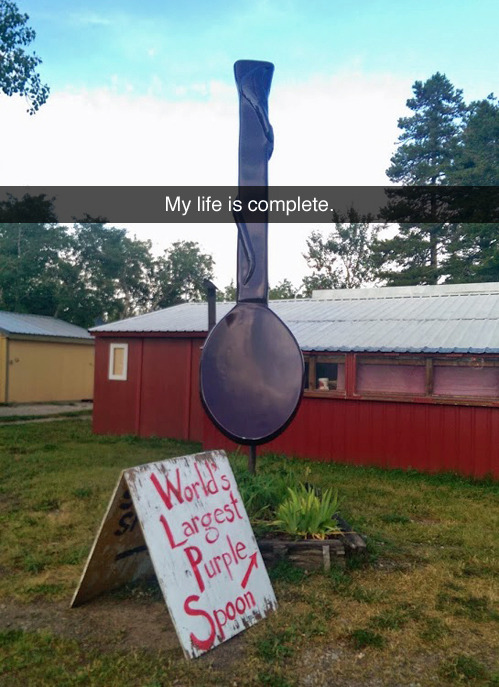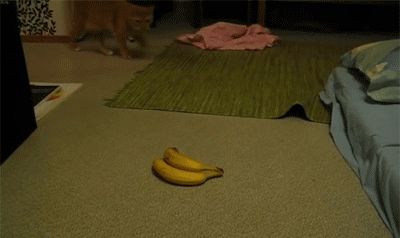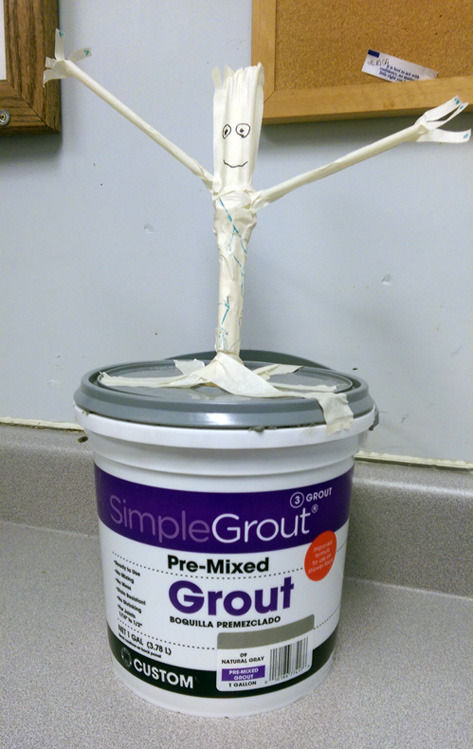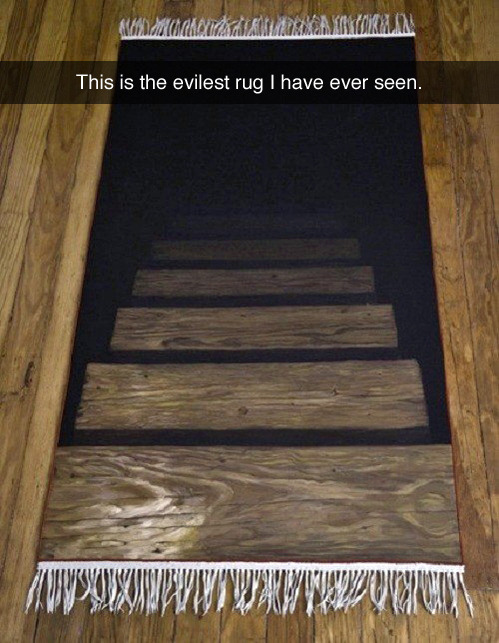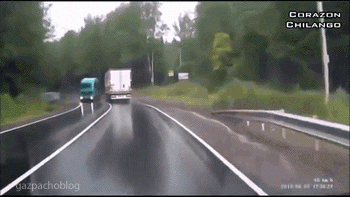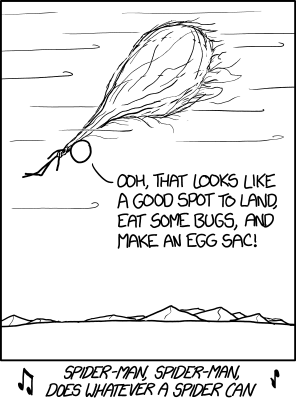The last two photos have been of a single, loose block, fallen from this outcrop. Here, we see the Liesegang rings in situ.
Photo unaltered. June 14, 2014. FlashEarth Location.
Miscellaneous thoughts on politics, people, math, science and other cool (if sometimes frustrating) stuff from somewhere near my favorite coffee shop.
Saturday, September 13, 2014
Friday, September 12, 2014
Geo 730: September 12, Day 620: Liesegang 2
In early October of 1989, I was hired to do some geochemical reconnaissance mapping and sampling in this area. (See this post for some more information.) It involved following 200 foot contours (constant elevation), collecting samples from the soil B-horizon every 200 feet laterally, flagging sample sites, and mapping those locations as we went. One of the contours my field partner Mark and I were assigned happened to be at approximately the same elevation as this access road, which has been the subject of the photos in this series for the last week or so. The road itself was problematic- there's no undisturbed soil below the upper edge of the cut, and below the road, it's difficult to tell what's fill from road construction and what is undisturbed. As I recall, we tried to sample above the road cut mostly, but scrambling up and down those cuts was difficult at best.
If it hadn't been for that job, I wouldn't have found these spots. That would've been a shame.
Photo unaltered. June 14, 2014. FlashEarth Location.
If it hadn't been for that job, I wouldn't have found these spots. That would've been a shame.
Photo unaltered. June 14, 2014. FlashEarth Location.
Thursday, September 11, 2014
Geo 730: September 11, Day 619: Liesegang 1
Liesegang rings are, as we euphemistically say in the geo biz, "not well understood." In other words, we have some clues, but no one has managed to put the details together for a clear picture of how these are formed. No matter, they're fun and pretty; their mystery only adds to their appeal.
This spot is maybe another 50 yards farther down the logging road past the bare area of the last two photos of the vein in the cut. Past that bare area, there's a copse of Douglas firs; as those start to peter out into the next bare area, look for this colorful exposure on the wall of the hillside above the road.
Photo unaltered. June 14, 2014. FlashEarth Location.
This spot is maybe another 50 yards farther down the logging road past the bare area of the last two photos of the vein in the cut. Past that bare area, there's a copse of Douglas firs; as those start to peter out into the next bare area, look for this colorful exposure on the wall of the hillside above the road.
Photo unaltered. June 14, 2014. FlashEarth Location.
Geo 730: September 10, Day 618: Fire and Water
A nice conclusion to the vein photos, the fiery red of Aaron's hair along with the watery blue of Dana's clothes combine to create the quartz vein directly between them. Of course, "fire" is figurative in this case; the heat was supplied by the diorite intrusion we saw at Yellowbottom Falls, and the "water" was a hydrothermal fluid, well above the temperature we think of as boiling, but under enough pressure to keep it liquid. It would've hardly been perceived as a cool blue. The temperature we call boiling, 100 C, is only "boiling" at standard atmospheric pressure. Higher pressures mean higher boiling points, lower pressures mean lower temperature. So the same physical processes that deposited this vein also necessitate the need for high-elevation cooking instructions for some foods. Cooking pasta at Yellowstone National Park takes longer than it does here in the Willamette Valley, because YNP is 2-2 1/2 kilometers higher in elevation.
Photo unaltered. July 9, 2012. FlashEarth Location.
Photo unaltered. July 9, 2012. FlashEarth Location.
Tuesday, September 9, 2014
Geo 730: September 9, Day 617: In the Same Vein...
No, wait, actually, this is a different quartz vein, down at road level (no climbing!), and maybe 75 yards farther along the (blocked) logging road. The crystals here are nothing to look at, but the context is perhaps somewhat clearer than at the big vein up on the hillside, which has been stripped of the surrounding host rock. This one tapers off as it rises from beside Dana's left foot, up along her side, then appears to thicken again a few feet over her head. Notice that the rock on either side of the vein is much less competent, and weathering more quickly, than the vein itself. There's a second vein on the left side, heavily stained with bluish-black manganese oxides, which looks as if it's older. However, it may have simply been exposed to weathering for a longer period of time. There was some excavation and roadwork (new exposures opened up) prior to this area being logged in the late 1980's. So the "younger" vein may simply reflect more recent exposure.
Photo unaltered. July 9, 2012. FlashEarth Location.
Photo unaltered. July 9, 2012. FlashEarth Location.
Monday, September 8, 2014
Geo 730: September 8, Day 616: Milky Quartz
When not contaminated by impurities, quartz tends to be colorless and clear, or milky-white. I can't say with any authority what differences in environments lead to one or the other, but my guess is that transparent quartz is likely the result of slow, orderly, relatively low-temperature deposition from aqueous solution, while milky quartz results from rapid deposition, with resulting fluid inclusions (Too small to see here, but I have seen macroscopic examples elsewhere, in the related Blue River District- PDF, see page 5 for location.) and flaws in the crystal lattice. These inclusions and flaws would lead to light scattering in the crystal, so they're translucent: light passes through, but is disrupted enough that you can't see an image through it.
Photo unaltered. August 5, 2012. FlashEarth Location.
Photo unaltered. August 5, 2012. FlashEarth Location.
Sunday, September 7, 2014
Geo 730: September 7, Day 615: Mossy Quartz
Nice contrast between the green moss colonizing the vein rock and the earthy tones of the quartz crystals. A lot of the latter's coloration is surface staining with iron oxides/hydroxides and manganese oxides. I've learned that much of the staining can be removed by boiling samples (in Pyrex, not metal!) in oxalic acid. But there are still some impurities in the interior, which gives the quartz nice red, yellow and orange tones, and sometimes even amethyst-like purples from the manganese.
Photo unaltered. August 5, 2012. FlashEarth Location.
Photo unaltered. August 5, 2012. FlashEarth Location.
Sunday Funnies: Ethanol Edition
SMBC
"Reading my PI's CV from when she was my age" What Should We Call Grad School?
Bad Newspaper
Sober in a Nightclub
Tastefully Offensive
Mock, Paper, Scissors
Tastefully Offensive
Sober in a Nightclub
Bits and Pieces
Gemma Correll
Bits and Pieces
Blackadder
"Transitioning from undergrad to grad school" What Should We Call Grad School?
Derpy Cats
Noise to Signal
New Yorker
Bad Newspaper
"I am Grout." Tastefully Offensive
Cheezburger
Danziger
Soy Cabo Reyes, via 9Gag
What Would Jack Do?
Texts From TNG
Wil Wheaton
Very Demotivational
Tastefully Offensive
Very Demotivational
Funny to Me
Tastefully Offensive
What Would Jack Do?
Tastefully Offensive
Pictures in Boxes
Texts From TNG
Tastefully Offensive
Maximumble
Bad Newspaper
Funny to Me
Bits and Pieces
Happy Jar
Real Life Adventures
Cyanide and Happiness
"Jesus Saves" Darius Whiteplume
Sober in a Nightclub
Sober in a Nightclub
A crew of 428, just the one bathroom. Very Demotivational
Shannon Wheeler
Texts From TNG
Noise to Signal
Darius Whiteplume
Blackadder
xkcd (Tip: click that link and hover your mouse cursor over the comic, and read the text that pops up.)
The Far Left Side
"Clever Baby Announcements" Two more at Bits and Pieces
Sober in a Nightclub
Bizarro
Not just Holy, but holey, too! Tastefully Offensive
"Reading my PI's CV from when she was my age" What Should We Call Grad School?
Bad Newspaper
Sober in a Nightclub
Tastefully Offensive
Mock, Paper, Scissors
Tastefully Offensive
Sober in a Nightclub
Bits and Pieces
Gemma Correll
Bits and Pieces
Blackadder
"Transitioning from undergrad to grad school" What Should We Call Grad School?
Derpy Cats
Noise to Signal
New Yorker
Bad Newspaper
"I am Grout." Tastefully Offensive
Cheezburger
Danziger
Soy Cabo Reyes, via 9Gag
What Would Jack Do?
Texts From TNG
Wil Wheaton
Very Demotivational
Tastefully Offensive
Very Demotivational
Funny to Me
Tastefully Offensive
What Would Jack Do?
Tastefully Offensive
Pictures in Boxes
Texts From TNG
Tastefully Offensive
Maximumble
Bad Newspaper
Funny to Me
Bits and Pieces
Happy Jar
Real Life Adventures
Cyanide and Happiness
"Jesus Saves" Darius Whiteplume
Sober in a Nightclub
Sober in a Nightclub
A crew of 428, just the one bathroom. Very Demotivational
Shannon Wheeler
Texts From TNG
Noise to Signal
Darius Whiteplume
Blackadder
xkcd (Tip: click that link and hover your mouse cursor over the comic, and read the text that pops up.)
The Far Left Side
"Clever Baby Announcements" Two more at Bits and Pieces
Sober in a Nightclub
Bizarro
Not just Holy, but holey, too! Tastefully Offensive













